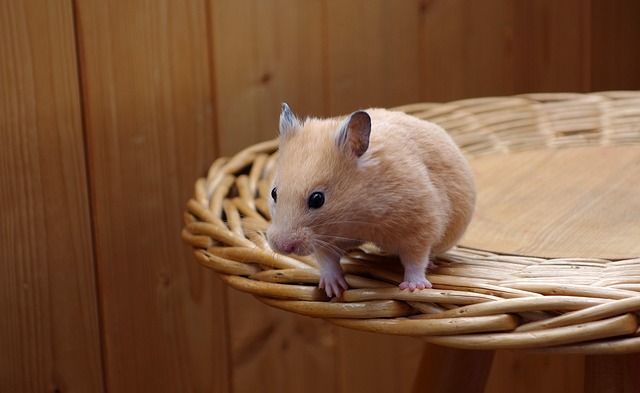Hamsters are adorable pets that are loved by many. These small creatures are known for their playful and active nature, and it’s no surprise that owners often wonder if they can let their hamsters run around the house.
While it may seem like a fun idea, it’s essential to consider the safety and well-being of the hamster and the household.
Hamsters are natural burrowers and love to explore, but they are also prey animals that can easily get scared or stressed.
Running around the house can expose them to dangers such as falls, sharp objects, toxic substances, and other pets.
Additionally, hamsters tend to chew on things, which can cause damage to furniture, electrical wires, and other household items.
Therefore, taking precautions and providing a safe and secure environment for the hamster to play in is essential.
The Benefits of Letting Hamsters Run Around the House
Physical Exercise
Allowing hamsters to run around the house provides them with much-needed physical exercise that can help keep them healthy and active.
Running around the house can help hamsters burn off excess energy, decreasing stress and anxiety.
Additionally, it can help hamsters maintain a healthy weight, which is essential for their overall well-being.
Mental Stimulation
In addition to physical exercise, letting hamsters run around the house can provide them mental stimulation.
Hamsters are naturally curious and love to explore new environments, so allowing them to do so can help keep them mentally stimulated and engaged.
This can lead to a decrease in boredom and an increase in overall happiness.
Bonding with Your Pet
Letting hamsters run around the house can also help strengthen the bond between pet and owner. Spending time with your hamster while they explore their surroundings can help build trust and create a stronger connection between you and your pet.
It can also be an enjoyable activity for you and your hamster.
Overall, letting hamsters run around the house can provide various benefits for both the hamster and their owner.
However, it is essential to ensure that the hamster’s environment is safe and secure and that they are supervised at all times to prevent accidents or injuries.
Preparing Your House for a Hamster’s Free Roam
Securing the Room
Before letting a hamster roam freely in your house, it is essential to secure the room. This means closing doors and windows to prevent the hamster from escaping or getting lost.
Hamsters are small and can easily fit through small gaps, so sealing any holes or cracks in the room is essential.
Removing Hazards
Hamsters are curious creatures and love to explore their surroundings. To ensure their safety, removing any hazards from the room is essential.
This includes electrical cords, sharp objects, toxic plants, and other items that may harm the hamster.
Providing a Safe Space
Even with a secure and hazard-free room, providing a safe space for the hamster to retreat to is essential.
This can be a cage or a designated area in the room that is free of hazards. The safe space should include food, water, and a comfortable resting place.
When preparing your house for a hamster’s free roam, it is crucial to remember that hamsters are small and fragile animals.
Taking the necessary precautions to ensure their safety and well-being is crucial.
Supervising Your Hamster’s Free Roam
Setting Boundaries
When allowing your hamster to roam around the house, it’s essential to set boundaries to ensure their safety.
This can be done by creating a designated play area for your hamster using baby gates or other barriers.
Removing any potential hazards, such as electrical cords or toxic plants, is also essential.
Watching for Signs of Stress
While your hamster may enjoy exploring their surroundings, it’s essential to watch for signs of stress.
These can include excessive grooming, hiding, or aggressive behavior. If you notice any of these signs, it’s best to return your hamster to its cage and try again later.
Interacting with Your Hamster
Supervising your hamster’s free roam also provides an opportunity for interaction. You can offer your hamster treats or toys to play with and observe their behavior.
However, it’s important to remember that hamsters are nocturnal animals and may become stressed if woken during the day.
Supervising your hamster’s free roam can be an enjoyable and enriching experience for you and your pet.
By setting boundaries, watching for signs of stress, and interacting with your hamster, you can ensure a safe and happy experience.
Potential Risks of Letting Hamsters Run Around the House
Injury and Illness
Allowing hamsters to run around the house can put them at risk of injury and illness. Hamsters are small and fragile creatures that can easily get hurt by falling from heights or getting stepped on.
They can also get sick if they encounter harmful substances or bacteria in the house. Some everyday household items, such as cleaning products, can be toxic to hamsters if ingested.
Damage to Your Home
Hamsters are natural chewers and can cause damage to furniture, walls, and other household items if left unsupervised. They may also dig or burrow in carpets or other soft materials, causing further damage.
Additionally, hamsters may urinate or defecate in areas where they are not supposed to, leaving stains and odors that can be difficult to remove.
Escaping
Hamsters are known for their ability to escape from cages and enclosures. If left to run around the house, they may find small openings or gaps to squeeze through and escape. Once outside, hamsters are at risk of getting lost, injured, or eaten by predators.
In conclusion, while letting hamsters run around the house may seem fun, it is vital to consider the potential risks and take necessary precautions to ensure their safety and well-being.




